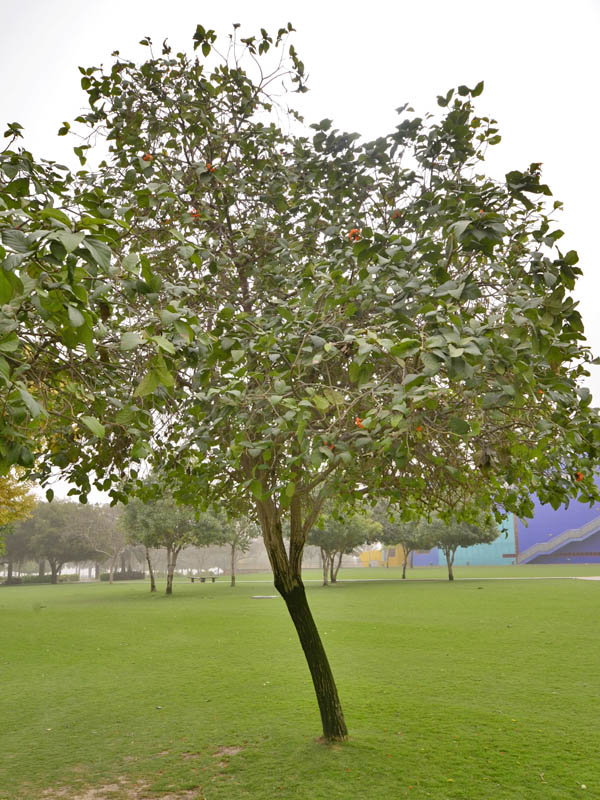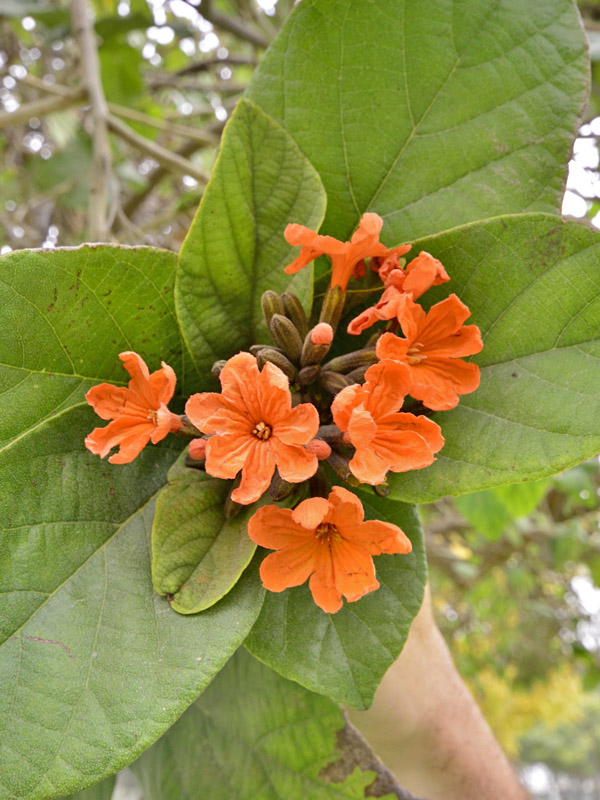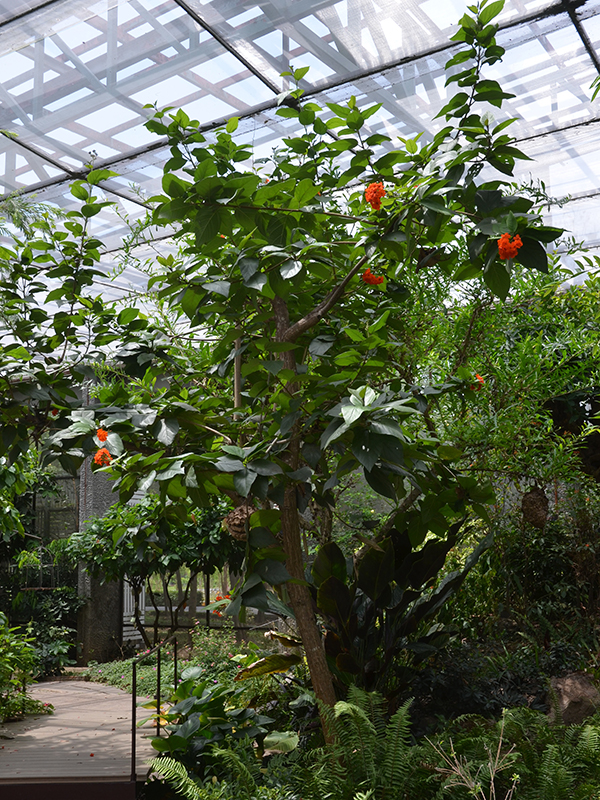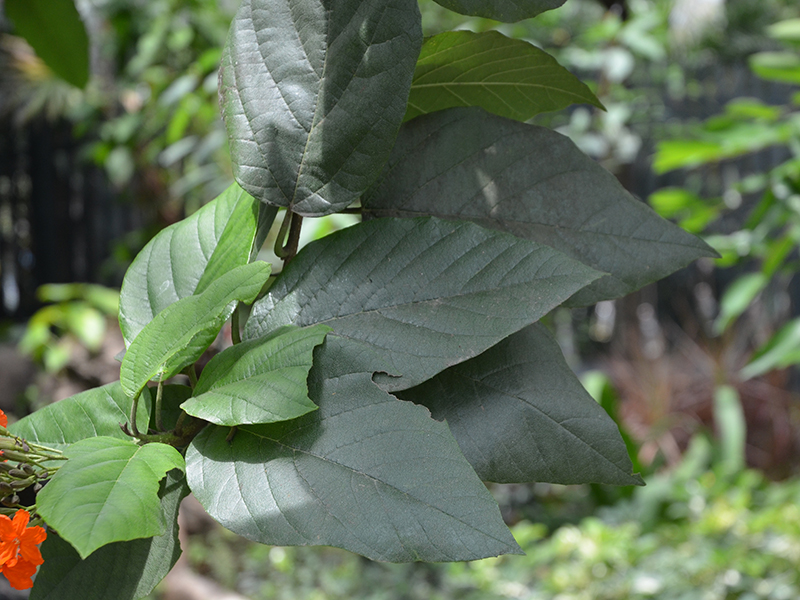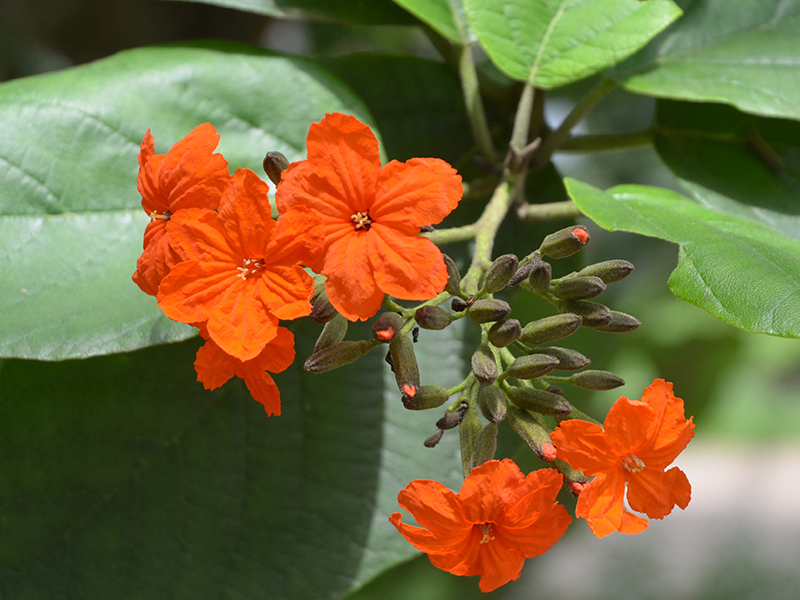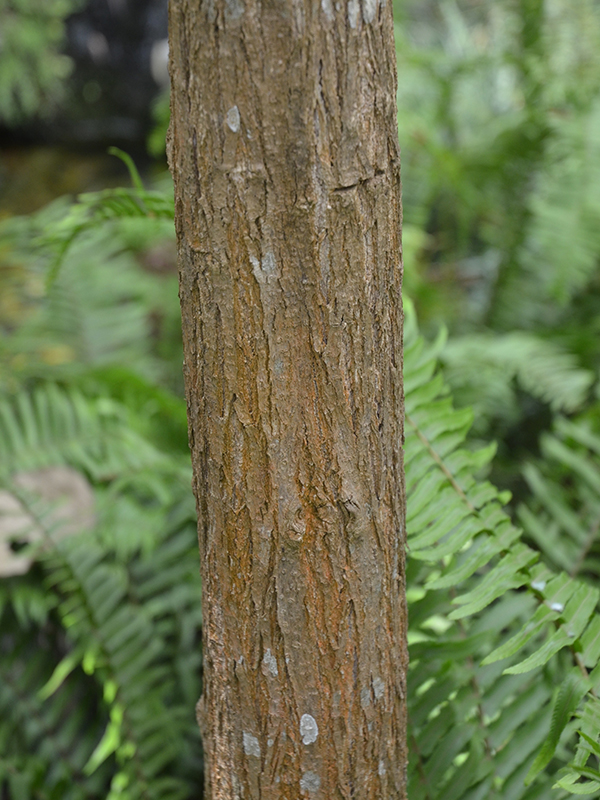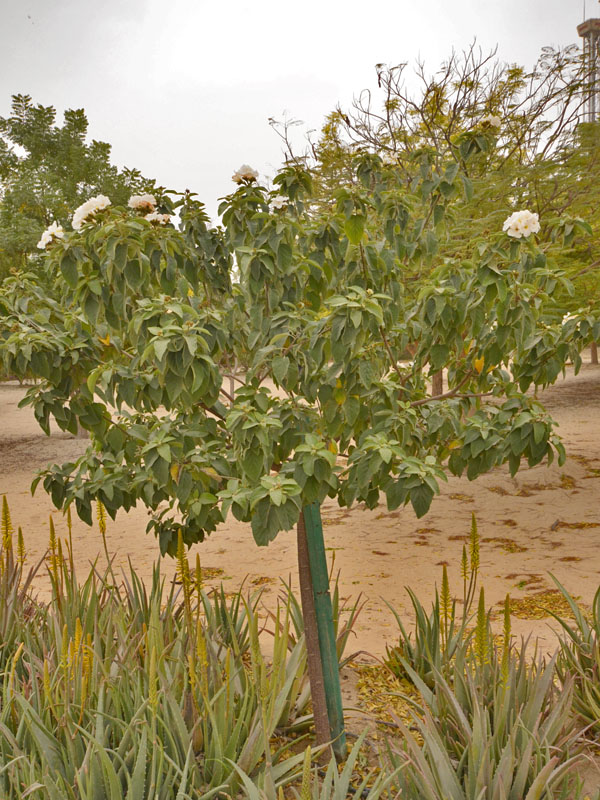
Tropicals, Woody > Cordia > Cordia sebestena > Cordia sebestena
Cordia sebestena
Geiger Tree
Origin: Native to the American tropics and Venezuela.
Mike's
Opinion


"
Being native to Florida, this tree is uniquely adapted to handle high amounts of salt in the water and air. It is perfect for gardens that are located close to the ocean or salt water lakes, such as a cottage or summer home gardens. Additionally, the bright orange flowers are a great contrast to the blue of the water. Although the tree is susceptible to Orange Geiger Beetle, the tree is often able to recover quickly from the damage proving that this tree is very resiliant.
Michael Pascoe, NDP., ODH., CLT., MSc. (Plant Conservation)
"
| Family |
| Boraginaceae |
| Genus |
| Cordia |
| Species |
| sebestena |
| Category |
| Tropicals, Woody |
| Type |
| Tree (evergreen) |
| USDA Hardiness Zone |
| 10a - 10b |
| Canadian Hardiness Zone |
| Requires cold season protection under glass. |
| RHS Hardiness Zone |
| H2 - H3 |
| Temperature (°C) |
| -1 - 4 |
| Temperature (°F) |
| 30 - 40 |
| Height |
| 9 m |
| Spread |
| 7.5 m |
Photographs
Description and Growing Information
Flowering Period
| General Description |
| A small evergreen tree that grows to an approximate size of 7.5 - 9 m tall with leaves of a dark green colour and a rough, hairy texture. It is naturally pyramidal in shape but can be trained to be bushier in appearance. It is a very drought and salt tolerant tree and can be found growing most often in warm coastal regions. |
| Landscape |
| It is often used as a street, parking lot or seaside accent tree. The brightly coloured blooms make them suitable for use in parks, beside patios and as specimen trees in gardens. |
| Cultivation |
| The tree can be single or multi-stemmed. However, for the best stability the tree should be pruned to only have one stem, as it has the potential to split with multiple stems. Ensure branches do not touch or rub against each other. |
| Shape |
| An upright and slightly pyramidal shaped tree. Older trees will have a more rounded and dense canopy. |
| Growth |
| Medium |
| ID Characteristic |
| It has bright orange-yellow flowers with dark green hairy leaves. |
| Pests |
| Some potential pests include various rusts, scales, mites, and the Geiger beetle. The Geiger beetle is the most common pest associated with the tree. The beetle will defoliate trees, however the extent of the damage is mostly cosmetic. The damage is often not fatal because the tree is quick to recover. |
| Habitat |
| Preferable pH is 5.6 - 6.5 (acidic to slightly acidic), but is highly tolerant of alkaline soil. The tree grows best in full sun, and is tolerant of partial shade. It can grow in various soil conditions as long the soil is well-drained. |
| Bark/Stem Description |
| Dark brown in colour with deep grooves that give the appearance of scales. The bark is thin and can easily be peeled and damaged by tools and equipment. |
| Flower/Leaf Bud Description |
| Cylindrical and oblong in shape with a round tip. The bud is about 2.5-3.8 cm in length. |
| Leaf Description |
| Dark green, simple leaves with an alternate orientation on the branch. The leaves are thick and ovate in shape with pinnate venation and a rough upper surface. |
| Flower Description |
| Orange-red in colour with stamens that are a yellow-orange. The flowers form in terminal clusters (cymes) much like a geranium. The clusters are at the ends of the branches. |
| Fruit Description |
| The fruit will start out green then change to white in colour being ovoid in shape. When ripe, the fruit is sticky to the touch. The fruit is edible yet lacking in flavour, but the pleasant scent makes up for the taste. |
| Colour Description |
| The leaves are a dark green colour that don't change in autumn. The flowers can be a deep or bright orange-red colour. The bark is dark brown with lighter ridges running the length of the trunk. |
| Texture Description |
| The bark and leaves have a rough texture that does not change throughout the year. |
| Notable Specimens |
| Royal Park Rajapruek, Mae Hia, Thailand |
| Propagation |
| The most common ways of propagation are air-layering and seeds. To propagate be seed, direct sow the seeds after the last frost date. Seedlings will begin to flower after three years, and will reach maturity in five years. |
| Ethnobotanical Uses (Disclaimer) |
| Edible fruit. |
